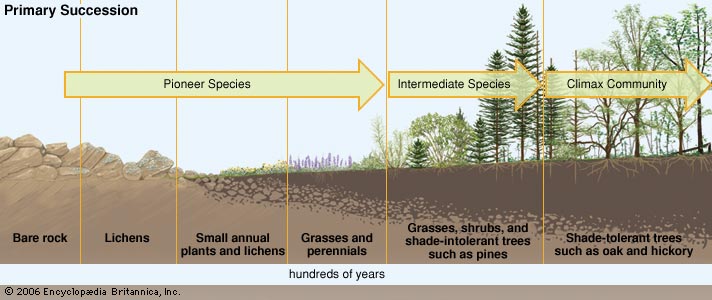What is the process of ecological succession from a pioneer community to a climax community?
1 Answer
See below.
Explanation:
Ecological succession, or the process in which the structure of a community evolves over time, typically means a community transitions from pioneer species that create soil to grasses and small shrubs and then to shade-tolerant species such as trees*.
The image below shows one example of ecological succession. Pioneer species are the first to arrive in an otherwise biologically empty environment. These may be grasses, low flowering plants, herbs, mosses, and others. Pioneer species break down rocks and create soil.
Then the populations of these pioneer species, decreases as other species also move to the area. Once there is sufficient soil, pioneer species will be out-competed by weedy like grasses and other plants that thrive in these conditions.
As these plants add biomass to the community, they will be replaced by shrubs and more shade-tolerant species.

A community may eventually reach its climax, the point where the composition remains mostly stable unless some sort of disturbance occurs. Otherwise, communities are constantly changing.
*Note that while some communities may become forests, other communities in the later stages of succession may not include many or any trees. For example, grasslands may or may not include any species of tree.
Succession is also possible in aquatic ecosystems. Learn more here.

